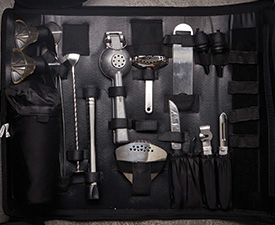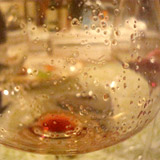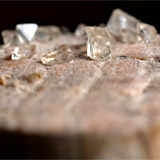Tartaric acid, the most common and distinctive wine acid which is a particularly good preservative. A naturally occurring acid found in grapes (and almost nowhere else) and the most important acid in wine. A good level of acidity is essential for balance, the refreshing taste of crisp whites, and ageing potential in all wines.
Tartaric acid may be most immediately recognizable to wine drinkers as the source of "wine diamonds," (harmless crystals) the small potassium bitartrate crystals that sometimes form spontaneously on the bottom of the cork, or fall to the bottom on the bottle.
These "tartrates" are harmless, despite sometimes being mistaken for broken glass, and are prevented in many wines through cold stabilization.
However, tartaric acid plays an important role chemically; lowering the pH of fermenting "must" to a level where many undesirable spoilage bacteria cannot live, and acting as a preservative after fermentation. With this the wine industry regards a tartrate (wine diamonds) dropout more of a sign of quality than a problem or an issue.
Commercial wineries cold stabilize their wines to avoid tartrate dropouts. Cold stabilizing is the process of dropping the temperature of the wine, after fermentation, to close to freezing for 3-4 days. This will cause the crystals to separate from the wine and stick to the sides of the holding vessel. When the wine is drained from the vessels, the tartrates are left behind. Most premium wines are cold stabilized in an attempt to minimize tartrate dropout.
So in summary - Tartaric acid (wine diamonds) is a harmless occurrence, and if swallowed will cause no ill effect, (possibly a slight gritty taste on the tongue) and these 'wine diamonds' do not subtract or add any negative characters or flavours to a wine, as they are naturally occurring in grapes, that are an important part of the winemaking process.











